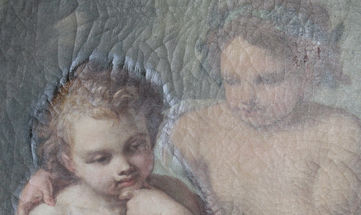
VILLA REALE DI MONZA
"tra bellezze neoclassiche senza tempo"
Una delle ville reali più belle d’Europa, al pari passo di Versailles, con la quale gareggia in bellezza: stiamo parlando della Villa Reale di Monza, un palazzo in stile neoclassico realizzato a Monza dagli Asburgo, quale residenza privata, durante la dominazione austriaca del XVIII secolo.
LA VILLA
Realizzata dagli Asburgo nel XVIII secolo, durante la dominazione austriaca, è divenuta palazzo reale con Napoleone e residenza estiva con i Savoia, la Villa Reale inizia la sua storia nel 1771, con l’arrivo a Milano del governatore Ferdinando d’Asburgo, figlio dell’imperatrice Maria Teresa d’Austria, il quale si ripromise di organizzare una vera e propria corte che avrebbe gravitato intorno al capoluogo lombardo trasformandolo definitivamente in capitale. L’incarico della costruzione della Villa Reale di Monza, venne affidato all’architetto imperiale Giuseppe Piermarini nel 1777 e fu portato a termine in soli tre anni. Esempio dell’architettura neoclassica, l’edificio presenta una struttura corporea a tre corpi principali disposti ad U che delimitano la corte d’onore, chiusa da due edifici cubici da cui si diramano le ali dei fabbricati di servizio.
ZONE DI
INTERVENTO
-
VANO CS20
Restauro dei dipinti ad olio su tela raffiguranti dei putti in cattivo stato di conservazione.
Parete Nord: Putti con libro e globo
Parete Sud: Putti con canarini e cani.
-
VANO CS23
Dipinti ad olio su tela raffiguranti scene allegoriche con putti in cattivo stato di conservazione.
Parete Nord: Putti con pesci
Parete Sud: Putti con strumenti musicali.
-
VANO CS27
Dipinti ad olio su tela raffiguranti scene allegoriche con putti in cattivo stato di conservazione.
Parete Nord: Putto con saette su telaio ligneo fisso Parete Sud: Putto con frecce (Cupido) privo di telaio, inchiodata direttamente sulla parete.
-
VANO CS3 (Parete Est ed Ovest)
Dipinti ad olio su tela raffiguranti due vedute con rovine in discreto cattivo stato di conservazione.
Tele con tessitura ortogonale, probabilmente di lino o misto lino e canapa.
-
VANO CS09
Dipinto ad olio su tela steso con pennellate corpose nella parte centrale e con pennellate più sottili e distese nelle parti perimetrali.
Soggetto: “Il Giudizio di Re Salomone” .
-
VANO CS17
Dipinto ad olio su tela steso in pennellate sottili e distese.
Soggetto: scena mitologica “Bacco e Arianna” .

5 FASI DI LAVORAZIONE
Cinque fasi principali che descrivono dettagliatamente gli interventi di recupero, consolidamento e restauro della tela posta sulla volta della Sala CS09, per garantirne la conservazione e stabilità nel tempo.
1
SMONTAGGIO
E REALIZZAZIONE DEL TELAIO
La tela è stata prima smontata dal telaio originale.
Successivamente è stato realizzato un nuovo telaio che riprende esattamente la forma dell’originale, utilizzando multistrato per evitare imbarcamenti e svergolamenti sulle lunghe tratte.
Per garantire sostegno e solidità, dato il peso e la dimensione della tela, le parti sono state fissate con piastre e tensionatori, permettendo al contempo una minima elasticità nel tempo.
2
TENSIONAMENTO
E PROTEZIONE DELLA TELA
L’intera struttura è stata ulteriormente tensionata grazie a tiranti e cavi scorrevoli passanti per anelli fissati al telaio, ottenendo una tensione ottimale sulla tela.
Prima di ogni fase e movimentazione, la superficie pittorica è stata protetta con velinatura; le veline sono state successivamente rimosse inumidendo la tela con acqua tiepida, favorendo una prima pulitura sfruttando la componente detergente della colletta.
3
PULITURA
E CONSOLIDAMENTO DELLA PITTURA
Si è proceduto con la pulitura a solvente della superficie pittorica per solubilizzare completamente la vernice alterata, evitando un’azione meccanica prolungata, dannosa a causa dei sollevamenti presenti.
Il consolidamento è stato eseguito tramite stesura di colletta e stiratura, riattivando la coesione tra gli strati pittorici più profondi.
4
INTEGRAZIONE
E RITOCCHI
Sono state applicate fasce perimetrali in tela di poliestere con adesivo.
Le lacune sono state stuccate e il ritocco è stato campionato con una prima passata ad acquerello, seguita da colori a vernice, per garantire la migliore resa cromatica.
5
VERNICIATURA FINALE
E RIMONTAGGIO
La verniciatura finale ha previsto l’uso di una miscela di vernice lucida e opaca, per una protezione duratura.
Infine, il dipinto è stato riposizionato nella sede originale tramite lunghi perni passanti, che sono stati legati tra loro per assicurare maggiore stabilità e tensione, contrastando il peso della tela.

LAVORAZIONI
SU TELE
-
Riprese in luce ultravioletta e infrarossa su una porzione delle pareti e sulle tele.
-
Rimozione dei quadri sovrapporta e smontaggio delle tele dai telai.
-
Accurata spolveratura a secco, sul fronte e sul retro, con pennelli a setole morbide per eliminare polveri e agenti superficiali.
-
Rimozione delle grandi pezze che univano i lembi di due lacerazioni sulla tela CS20 Nord; le lacerazioni sono state risarcite incollando i lembi con Poliammide, per un intervento più contenuto.
-
Pulitura dei depositi superficiali mediante tampone, dopo test preliminare di compatibilità con mezzo acquoso.
-
Trattamento biocida.
-
Applicazione del consolidante.
-
Esecuzione del sottovuoto per abbassare il cretto e consolidare gli strati pittorici.
-
Applicazione di fasce perimetrali in tela Ispra lungo i bordi.
-
Stuccatura delle lacune con stucco.
-
Ritocco pittorico a campione con primo passaggio ad acquerello.
-
Ritocco finale con colori disciolti in vernice.
-
Verniciatura protettiva finale
VIDEODOCUMENTAZIONE
Con questo breve filmato vi invitiamo a scoprire la bellezza silenziosa del cantiere, tra stucchi impolverati, luce che filtra tra i ponteggi e respiri lenti di mani esperte. Un luogo dove ogni intervento è ascolto, ogni traccia un dialogo con il tempo e con l'eleganza neoclassica che qui ancora vive.
ARCHIVIO FOTOGRAFICO
DOCUMENTI TECNICI
PRIMA E DOPO

















































